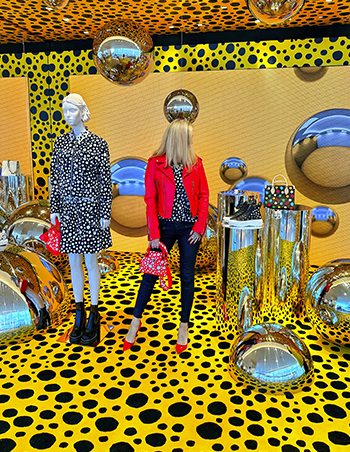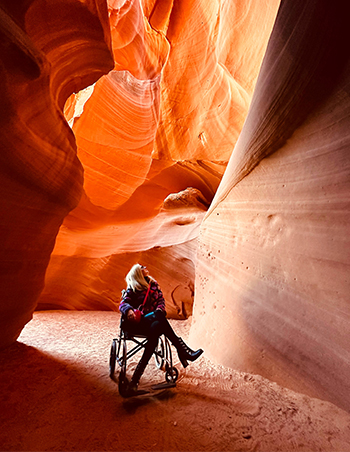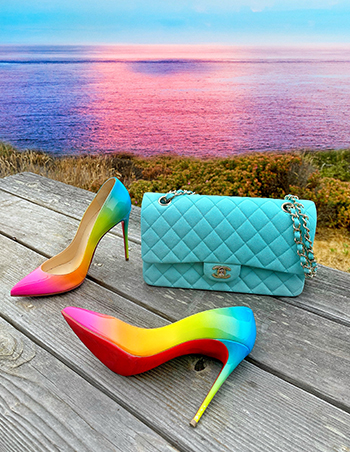
Why I Love Classic Chanel Flaps
Date: 01/27/2023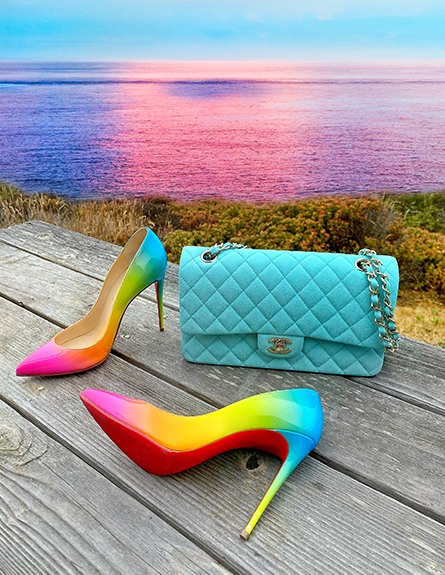
Recently I wrote a quick history of Louis Vuitton’s iconic trunk design, and it got me thinking: what other accessories and accessory details really appeal to me when it comes to fashion design?
From Louboutin to Louis Vuitton, I adore classic vintage jackets, shoes, skirts, scarves, handbags, and Little Black Dresses, plus much more from an ever-expanding pool of incredible designers. Yet (and perhaps above all others) the Chanel Flap remains one of the most classic, iconic accessories out there—and among the most prevalent in my closet!
Yet, as someone who loves handbags of all kinds, I had to ask myself. What is it about this bag that really makes it stand out for me enough to buy? Is it the color? The design? The brand name? The history? With these questions in mind I decided to do a little exploring of my own, and so I’m taking it as a sign to pass along my own love for the classic Chanel Flap design by talking about its history and origins, how it evolved through different eras of design, and (bonus!) what the Chanel Flap looks like today!
What is the Chanel Flap Bag?
An iconic design from Chanel, their version of the Flap bag comes in two primary styles: either the Timeless Classic Flap, or the reissued version of the flap bag, the 2.55. For the Classic Flap in particular, there are two main flap types, the double or single flap. I love the double flap style a lot because it offers an extra interior flap that separates the main exterior from the interior of the bag, with the single flap being ultra-light in comparison to the double-flap.
Seems simple, right? Well, according to this article, “Chanel’s Flap Bags have one of the more confusing taxonomies in handbag history.” That’s because – although you would think ‘classic’ to mean ‘original’, the 2.55 is actually what references Coco Chanel’s original flap design, including what has since been called a ‘mademoiselle lock’–thanks to Chanel’s status as an unmarried woman (pointlessly gendered…anyone?). That’s because Karl Lagerfeld, who debuted a reissue of Chanel’s original design in 2005, named it the 2.55, while his own CC-locked design is known as the “Classic” flap bag. Only recently in 2021 did Chanel rename their Classic Flap line to the 11.12, named for the original style code of the Medium Classic Flap bag, A01112. Oh! And although you can likely still get the single flap design on the resale market, the style has since been discontinued by the design house–making the whole question of ‘what is a chanel flap bag’ a bit easier to answer.
Hint: A Lagerfeld bag will include updates like a leather woven chain and the Double C turn-lock closure.
Altogether, a Chanel Flap bag is a leather quilted handbag (or shoulder bag) with a flap that encloses the bag’s interior. For a long time, burgundy leather has been used to line the original flap bags, while the signature chevron or classic quilted designs known to many of Chanel’s early designs and styles are said to have been inspired by the jackets that stablehands wore while working. Of these styles, there are a variety of sizes: the square mini, the mini, the extra mini, and what is called ‘east-west’ sizes, though this article says they are not officially considered Classic Flap bags by the design house (adding to the difference in overall price).
In the beginning, most (if not all) Chanel Flap bags were black with the burgundy lining, while nowadays Chanel releases fresh new styles each season featuring different colors and materials. Bag materials have also ranged over the years, but the most popular are by far the grained calfskin (caviar) and lambskin options, while the clasps on each bag have seen their own changes and evolutions over time. For instance, past iterations have seen 24-carat gold clasps (discontinued in 2008), with the most common clasp materials being silver, gold, light gold, and the iconic ‘So Black’ hardware option. According to this article, the So Black edition – which uses a black body and matching glossy or matte black hardware – is the most sought-after variation of the bag each season…so much so that they rarely stay on the shelves when they reach boutiques.
Modern Chanel Flap Bags also come with a metal chain that the wearer can use to transition their handbag to a shoulder-bag. Because this chain is often made of metal, it is not adjustable, however the Classic Flap bag (now 11.12) will always only use leather-woven straps. According to this article, it’s because resources were scarce during design! That’s why buyers can still find original Chanel flap bags with the leather-woven design on the resale market today.
Something that hasn’t changed about the design over the years, and will likely not change, are the different pockets built into the bag. Besides the main pockets inside the flap bag, the biggest flap closest to the bag’s interior includes a small inner pocket that can be closed with a zipper (supposedly, this pocket was designed to store forbidden love letters during her affairs). Then, between the two internal pockets there is space for a single lipstick, as well as a slip-pocket embellished on the outside of the design to safely secure money without having to open the other flaps and pockets.
All in all, the design has outlasted the designer, and continues to remain a top fashion staple among us handbag lovers. So how was it that such an icon came to be? Let’s quickly look at the history of the original Chanel classic flap bag:
She grew up in Japan and by the time she was just ten years old, began to experience transmissions or hallucinations that soon began to inspire her artwork. Drawing flowers that apparently spoke to her, she began to draw under the stern eye of her mother, who did not approve of young Kusama’s creations.
Still so young, the vivid imagery of these ‘flashes of light, auras, or dense fields of dots” would speak to her or reflect in 3D around her while waking, and later inspired her work. She also credits the smooth formations of round polished stones on the bed of the river near her childhood home as an inspiration for her polka-dot designs.
Yet, when Kusama left Japan in 1957, she destroyed many of her early works, and began to explore America’s avant-garde movement from her new home in Seattle, and then in New York City. By 1960, she was creating an uproar in the art scene with far-out works that fought against the things she reviled most at the time, like commodification, womanizing, and the Vietnam war. For example, she once wrote a letter (and published it publicly) to Richard Nixon saying that she would have sex with him if he would end the occupation in Vietnam!
Although her work was famously successful in the years in between, by the early 70s Kusama returned to Japan. She had grown ill, and began to pour out different written works that some have called ‘shocking’. By the end of the decade she had admitted herself to a hospital for the mentally ill in Japan. She resides there to this day, though at 93 years old she is still producing work in a studio just a few blocks away.
A Brief History of the Chanel Classic Flap
The first time the world saw Chanel’s iconic flap bag was in February of 1955, hence the title of the design: 2.55. At this point Coco Chanel had been designing handbags for 25 years, and, allegedly inspired by the shoulder-style military satchels worn in the 1920s, she created an entirely new functional design that would ensure the wearer had both hands free at all times. Can you believe that at the time, you could buy the original Chanel 2.55 for as little as $220?! Still, the bag didn’t really ‘catch on’ or become closely associated with the design house in a big way until 1983 when the Chanel Classic Flap was released under creative director, Karl Lagerfeld. ater.
Chanel Flap Today
Whatever the color, size, and variation or artistic redesign, I strongly believe the Classic Flap (11.12) and the 2.55 will always keep their classic look, meaning your investment is going to keep its value in the long run–and that’s not only because Chanel regulates their supply. Even the plain leather versions can today retail for up to $6000–further evidence for the luxury and wealth that these bags symbolize!
Excitingly though, Chanel will release a combination of classic and seasonal designs…and then every once in a while we have the chance to get our hands on the gorgeous limited editions they release to commemorate special collections. For example, in 2016 Chanel hosted a Cruise where the Classic Flap was unveiled with a mermaid-esque aesthetic that featured shimmery leather and rainbow hardware–a design that Chanel has promised they will repeat in different ways in the future.
Today, the bag is going through its own renaissance, as are other bags in other collections from my favorite design houses. The design house itself is now putting bigger emphasis on the master artisans who curate deeply ornate, embellished versions of the Classic Flap bag–which are of course almost two to three times more expensive, but totally worth their value in craftsmanship. That being said, it’s more than likely art collectors who will be purchasing these pieces, as opposed to using them as wearables in their own wardrobes.What’s exciting to know about the design too, is that the house has announced they will no longer be using exotic textiles in their designs, which means that bags that use ostrich, python, alligator, or crocodile (and especially those in the So Black hardware option) are incredibly valuable today and still going up in price…so if you’ve gotten your hands on one, consider yourself lucky. You’ve made an incredible handbag investment!
Chanel Flap Forever!
I know this bag is going to be around for a long time to come, which honestly adds to its timeless feel. Which has me super curious! Which styles of the Chanel Flap bag have you absorbed into your collection? What do you love most about the unique features of your bag? What do you use all the little pockets for? Which bag do you think you’ll buy next?
Comment below, or reach out to me through Instagram and let me know! I’m always on the lookout for my next great handbag investment.
Until I hear from you next, all my love,

Lena
P.S. Read about my deep love for Chanel tweed HERE.
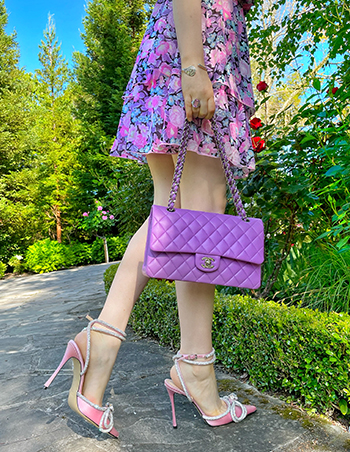
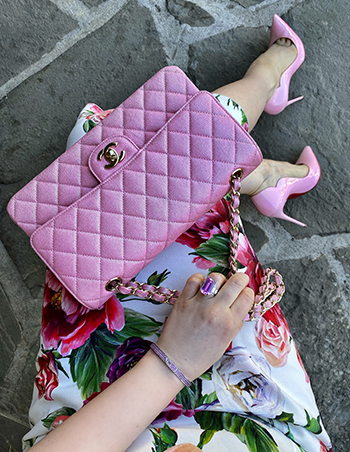
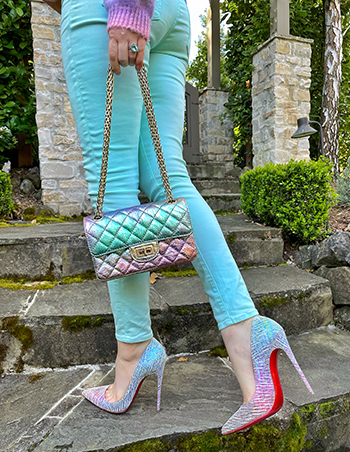
SUBSCRIBE
Get the latest updates, sneak peeks and more.
 Back To All Posts
Back To All Posts Previous Post
Previous Post